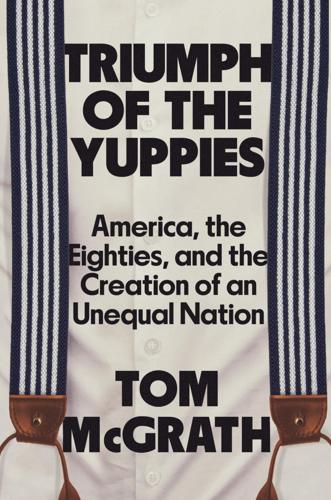
Triumph of the Yuppies: America, the Eighties, and the Creation of an Unequal Nation
by
Tom McGrath
Published 3 Jun 2024
The Times, for instance, was so besieged: New York Times, August 16, 1980. 7. “If you would talk to her about fame”: Thomas, Did It! 8. One day in 1978: “Jerry Rubin’s Change of Cause: From Antiwar to ‘Me,’” New York Times, November 11, 1978. 9. America had transformed itself: David Halberstam, The Reckoning (New York: William Morrow, 1986). 10. Rubin mockingly called the charges: Jerry Rubin, Do It! Scenarios of the Revolution (New York: Simon & Schuster, 1970). 11. In the wake of the trial: Jerry Rubin, Growing (Up) at Thirty-Seven (New York: M. Evans, 1976). 12. In his journal: Thomas, Did It! 13. In the 1960s, family income in America grew by an average of $6,000: “The Work Revolution,” Newsweek, January 17, 1983. 14.
…
Money and financial interest will capture the passion of the ’80s.” The op-ed did exactly what Rubin hoped: It brought attention to Jerry Rubin. News outlets across the country picked up on what was an undeniably great story: One of the most radical voices of the ’60s enters the most establishment-led sector of American life, the financial markets. Which wasn’t to say that all the attention was positive. Hardly. The Times, for instance, was so besieged by mail that two weeks after the op-ed ran, it published a half page of letters to the editor, almost all of them critical. “The ‘old’ Jerry Rubin, as Mr. Rubin himself would surely agree, was hardly a model of intellectual rigor,” one letter writer said.
…
• I want a restaurant called “Jerry Rubin’s,” which can be my Elaine’s, and where I can make money, have a base, do my networking, and make money. • I need a lot of money—a strong flow of money so that I can do what I want to do. • I want a blonde society beautiful wife. • I want a high executive lifestyle made up of high-level decision-making. • I want to go to every important party in the city. • I want to meet as many interesting people as I can. On every level. • I want to marry a 25-year-old Jewish American Princess who has money and beauty. • I love (sexual) romance. As it happened, Jerry Rubin’s funk coincided with the beginnings of a downturn in America itself.
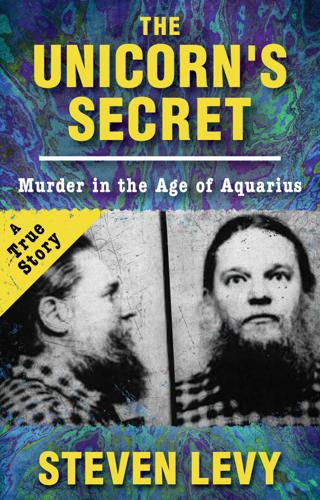
The Unicorn's Secret
by
Steven Levy
Published 6 Oct 2016
He met with two close friends, one of them the managing director of the Lehmann Brothers investment firm, the other an executive vice-president of AT&T. Then, in a crosstown hop that could well stand as definitive of his present existence, Ira rode in the phone company executive’s limousine to former radical Jerry Rubin’s apartment, where he would stay the night. The two sixties’ veterans rapped until two. The next day, Ira saw futurist Alvin Toffler, whom Einhorn was instructing on the hands-on aspects of computer conferencing. Then he was off to Washington, DC, to visit with the Congressional Clearinghouse for the Future.
…
“A week or so later, Ira came back with about five or six carefully selected volumes, which I read,” says the bishop. “Kind of a quick course.” Ira was also Powelton’s chief diplomatic officer. He was able to boast kinship with the superstars of the movement. He often visited New York City, hanging out at activist Jerry Rubin’s East Village apartment with the founding fathers of Yippiedom. It was a movement Ira liked; as Rubin wrote in his 1970 tome, Do It, “Yippies are leaders without followers. Yippies do whatever we want whenever we want to do it.” This was displayed in famous acts like dropping money onto the floor of the New York Stock Exchange and watching the straights go crazy.
…
On one excursion, a weekend blitz of a college newspaper conference in Washington, Ira documented his participation in the Drummer. He called himself one of the five Marx Brothers, “arriving via train from New York and Philadelphia, armed with chalk, smiles, pot, hash, acid, and the sense that America is quickly dying.” The other brothers were Jerry Rubin, Abbie Hoffman, Realist editor Paul Krassner, and psychedelic artist Marty Carey. Einhorn helped disrupt a Eugene McCarthy press conference. To those at the conference wondering who was this fifth Marx Brother, Ira provided the following explanation: “a unicorn here as a guerrilla.” To Einhorn, theater was the best form of protest.
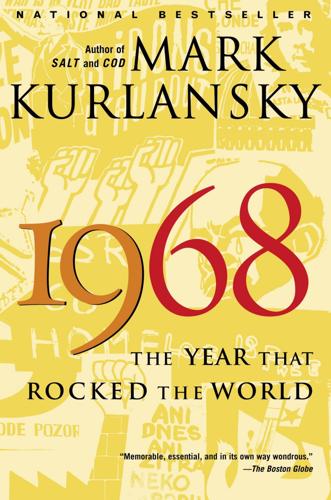
1968: The Year That Rocked the World
by
Mark Kurlansky
Published 30 Dec 2003
Only one of the seventy-one demonstrations was about the quality of education. On a Saturday in late October 1967, the Mobe had organized an antiwar demonstration in Washington, with protesters gathering at the Lincoln Memorial and then crossing the Potomac to march on the Pentagon. An antiwar activist from Berkeley, Jerry Rubin, was there with a New York City friend from the civil rights movement, Abbie Hoffman. Hoffman managed to grab media attention during the Washington march by promising to levitate the Pentagon and exorcize it by spinning it around. He did not deliver on his promise. Norman Mailer was there and wrote about it in Armies of the Night, which was to become one of the most read and praised books of 1968.
…
The Yippie! movement—only later in the year was the exclamation turned to acronym by inventing the name Youth International Party—was founded that New Year’s Eve, according to the official though not entirely factual story, at a Greenwich Village party, the product—so said its founders, Abbie Hoffman and Jerry Rubin—of an evening of marijuana. “There we were, all stoned, rolling around on the floor,” Hoffman later explained to federal investigators. Even the name Yippie!—as in both the cheer and the counterculture label hippie—showed a kind of goofy brilliance much appreciated by young militants and very little appreciated by anyone else.
…
Later that year Hoffman staged a “smoke-in” in which people went to Tompkins Square Park and smoked marijuana, which was pretty much what everyone had been doing anyway. “A modern revolutionary group,” Hoffman explained, “headed for the television station, not for the factory.” Hoffman’s partner and competitor was Jerry Rubin, born in 1938 1968 of Rubin and Hoffman rolling on the floor in drug-induced stupors while founding the Yippie! movement is exactly the opposite of what it appears to be. Instead of being the embarrassing reality leaked to the press by some disloyal insider, it was in fact a planted story. In reality, Rubin and Hoffman had given a great deal of sober thought to the creation of the movement.

Nixonland: The Rise of a President and the Fracturing of America
by
Rick Perlstein
Published 1 Jan 2008
He excoriated the “wild, hot rhetoric” that “pours out of the television set and the radio in a daily torrent,” from the Washington Post, Life, and the New York Times, working together to “tear our country apart.” He quoted Jerry Rubin on the Kent State campus “one month prior to the confrontation that brought the student deaths there”: “Until you people are prepared to kill your parents, you aren’t ready for revolution.” And even so, he thundered, James Reston, in his May 10 column, “saw fit to equate me with Jerry Rubin as an extremist…. And yet they ask us to cool our rhetoric and lower our voices!” Houston Republicans screamed their acclaim. His claim about Reston, whose May 10 column mentioned neither the vice president nor Jerry Rubin, was a brazen lie. Reston had focused the piece, instead, on his delight that more and more students were rejecting protest and working within the political system.
…
CHAPTER THIRTY-THREE: IN WHICH PLAYBOY BUNNIES, AND BARBARELLA, AND TANYA INSPIRE THEORETICAL CONSIDERATIONS UPON THE NATURE OF DEMOCRACY Robert Redford: J. Hoberman, The Dream Life: Movies, Media, and the Mythology of the Sixties (New York: New Press, 2003), 353. Abbie Hoffman and Jerry Rubin set up housekeeping: Abbie Hoffman, Jerry Rubin, and Ed Sanders, Vote!: A Record, a Dialogue, a Manifesto—Miami Beach, 1972 and Beyond (New York: Warner Paperbacks, 1972), 28, 42–44. “McGovern Backer No Longer Thinks”: Bob Greene, Running (Chicago: Regnery, 1973), 56. “Fellas, I don’t believe”: Hoffman, Rubin, and Sanders, Vote!
…
Wallaceites fantasized victory, thanks to Southerners who would sooner slit their throats than vote for the former attorney general who had invaded their states. Rockefellerites, hoping to position their man as the charismatic liberal in the fight, were crushed, and even the freaks dreaming of framing the Democratic convention in Chicago in August as a “Festival of Death” were bereft: “We expected concentration camps and we got Bobby Kennedy,” Jerry Rubin lamented. As for Gene McCarthy, he hated Kennedy as much as Nixon and Johnson did: just like that Little Lord Fauntleroy, scooping up others’ hard work as if it belonged to him by birthright. Johnson, speaking that Monday to the National Farm Union in Minneapolis, called Vietnam War skeptics like the two fellows he was running against something close to traitors.
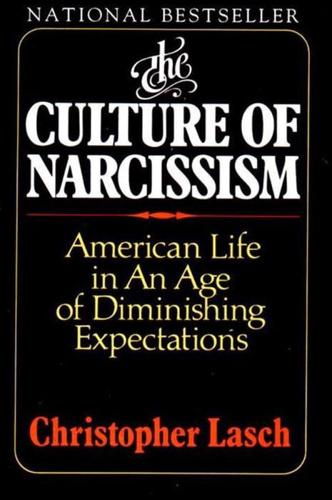
The Culture of Narcissism: American Life in an Age of Diminishing Expectations
by
Christopher Lasch
Published 1 Jan 1978
tion Rennie Davis leaves radical politics to follow the teenage guru, sonal or collective. Self-awareness remains mired in liberationist Maharaj Ji. Abbie Hoffman, former leader of the Yippies, de- cides that it is more important to get his own head together than to move multitudes. His onetime associate, Jerry Rubin, having reached the dreaded age of thirty and having found himself face to face with his private fears and anxieties, moves from New York to San Francisco, where he shops voraciously-on an apparently inexhaustible income-in the spiritual supermarkets of the West Coast. "In five years," Rubin says, "from 1971 to 1975, I directly experienced est, gestalt therapy, bioenergetics, rolfing, massage, jogging, health foods, tai chi, Esalen, hypnotism, modern dance, meditation, Silva Mind Control, Arica, acupuncture, sex ther- apy, Reichian therapy, and More House a smorgasbord course - in New Consciousness."
…
Paul Zweig, who spent ten years in Paris in the fifties and sixties and took part in the agitation against the , ' , ironAlgerian war, says that the war gradually became an env " ment pervading every aspect of his existence; yet external events play only a shadowy part in his narrative. They have the quality of hallucination, a vague background of "terror and vulnera" " " the futility of mental processes Under his instruction Zweig has experienced "the delirium of release. Like Jerry Rubin he attributes this "cure this feeling of being "healed and buo " . , " bility." At the height of the violent protest against the Algerian he war, he recalled a phrase he had once read in a book about t inner feeling of schizophrenia. The patient, with the pungency of to the destruction of his ps yant," ychic defenses.
…
One exponent of " guer- after exhorting his followers to live by their wits, quickly explained that to live by your wits is not to imitate the " rilla theater, " . , " militancy. Both whites and blacks embraced radical style in place of radical substance. By 1968 when the new left gathered for its "festival of life" outside the Democratic National Convenuon in Chicago, the , prominence of the Youth International led by Jerry Rubin and Abbie Hoffman made it clear that a theatrical conception of politics had driven more rational conceptions from the field "Yippie is gestalt theater of the streets Rubin has claimed compelling . " " , , people by example to change their awareness. Entering a Congressional hearing room in a Paul Revere costume or wearing judicial robes to a court proceeding is a way of acting out fantasies and ending repressions " .
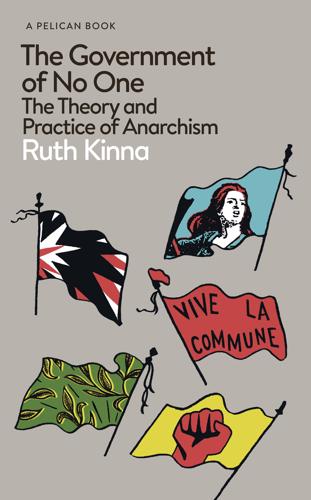
The Government of No One: The Theory and Practice of Anarchism
by
Ruth Kinna
Published 31 Jul 2019
Scully, The Never-Ending Revival: Rounder Records and the Folk Alliance (Urbana and Chicago: University of Illinois Press, 2008); Rounder Records Story, http://www.rounder.com/history/ [last access 2 June 2018]. 7 Private correspondence. 8 Stuart Christie, ‘Albert Meltzer: Anarchy’s Torchbearer’, Guardian, 8 May 1996; Albert Meltzer, I Couldn’t Paint Golden Angels, online at http://libcom.org/history/i-couldnt-paint-golden-angels-sixty-years-commonplace-life-anarchist-agitation [last access 22 February 2018]. 9 The Kurdish Project, online at https://thekurdishproject.org/history-and-culture/famous-kurds/abdullah-ocalan/; ‘Profile: Abdullah Öcalan’, Al Jazeera, 21 March, 2013, online at https://www.aljazeera.com/news/europe/2013/03/201332114565201776.html [last access 17 May, 2018]. 10 Cathy Porter, Fathers and Daughters: Russian Women in Revolution (London: Virago, 1976). 11 Micelle Garcia, ‘For a Former Panther, Solidarity after the Storm’, Washington Post, 4 December 2005; Malik Rahim, ‘This is Criminal’, San Francisco Bay View, 23 November 2008, online at http://sfbayview.com/2008/11/%E2%80%98this-is-criminal%E2%80%99/ [last access 4 June 2018]. 12 David Gordon, ‘Murray Newton Rothbard’, Mises Institute, online at https://mises.org/profile/murray-n-rothbard [last access 15 June 2018]; Murray N. Rothbard, ‘Are Libertarians Anarchists? “Mises Institute” https://mises.org/library/are-libertarians-anarchists [last access 15 June 2018]. 13 Jerry Rubin, Do It! Scenarios of the Revolution (London: Jonathan Cape, 1970); Eric Page, ‘Jerry Rubin, 56, Flashy 60’s Radical Dies; “Yippies” Founder and Chicago 7 Defendant’, The New York Times, 30 November 1994. 14 Miriam Elder, ‘Pussy Riot profile: Yekaterina Samutsevich’, Guardian, 8 August 2012; Matthew Bannister ‘Yekaterina Samutsevich: “Why I joined Pussy Riot”’, Outlook, BBC World Service, 10 December 2012.
…
Those who are not left scratching their heads, wondering what the actual results of these movements were, sometimes suggest that the only real legacy is one of state or capitalist recuperation. The Amsterdam white bike scheme is an example. In the 1960s Dutch police confiscated the bikes that anarchists made freely available for public use: today officers are duty-bound to arrest those who tamper with bank-sponsored cycles that can only be hired at cost. To give another example: Jerry Rubin’s 1960s message of empowerment, ‘Do It!’ now comes with corporate swoosh – Just Do It. A swathe of recent research shows that the European anarchist experience is not definitive. That means that glib pronouncements about the health or significance of a global movement cannot be based on the appraisal of its European fragments.
…
Having studied with Ludwig von Mises, he became Academic Vice-President of the Mises Institute, worked at the Brooklyn Polytechnic Institute and was appointed S. J. Hall Distinguished Professor of Economics at the University of Nevada. He described his views as libertarian, not anarchist, and advocated limited government to defend property and person.12 JERRY RUBIN (1938–1994) Founder of the counter-cultural Youth International or Yippies, Rubin described himself as the P. T. Barnum of the revolution. He attended Oberlin College, Ohio, and the University of Cincinnati before working as a sports reporter for the Cincinnati Post and attending Berkeley. He became Project Director of the 1967 100,000-strong anti-Vietnam March on the Pentagon.
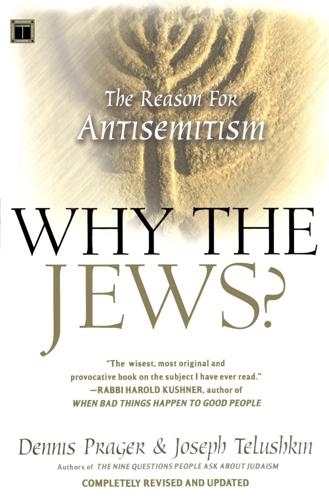
Why the Jews?: The Reason for Antisemitism
by
Dennis Prager
and
Joseph Telushkin
Published 1 Nov 2007
Nevertheless, and unfortunately for other Jews, the behavior of these radical non-Jewish Jews is identified as Jewish. The association of Jews with revolutionary doctrines and social upheaval has not, unfortunately, been the product of antisemites’ imaginations. Marx, Trotsky, Kamenev, Zinoviev, Rosa Luxemburg, Béla Kun, Mark Rudd, Abbie Hoffman, Jerry Rubin,William Kunstler, Norman G. Finkelstein, and Noam Chomsky are among the better known. 2 The phenomenon of the highly disproportionate role played by Jews in radical causes often has been commented upon. As the social psychologist Ernest van den Haag noted, “although very few Jews are radicals, very many radicals are Jews: out of one hundred Jews five may be radicals, but out of ten radicals five are likely to be Jewish.
…
Neither the demoralization of the non-Jewish nation nor the resultant non-Jewish antipathy to Jews concerns these people. They feel part of neither community, only the “community of man.” 8 For example, Leon Trotsky, when asked whether he considered himself a Russian or a Jew, responded, “No, you are mistaken. I am a social-democrat. That’s all.” 9 Fifty years later, Jerry Rubin referred to himself and other American Jewish radicals as “ex-Amerikan [ sic ] ex-jews.” 10 These alienated radical Jews have been active in societies as diverse as despotic and antisemitic czarist Russia, the democratic Weimar Germany, and the United States. In Russia, non-Jewish Jews were so disproportionately represented in the less radical Menshevik wing of the Communist Party that the Bolshevik Stalin is reported to have said that, with one large pogrom, there would no longer be a Menshevik movement.
…
It was a Zionist judge, Judge Hoffman, who allowed the other Zionists to go free but has kept Bobby Seale in jail…. The other Zionists in the Conspiracy 8 trial were willing and did sacrifice Bobby Seale…. Once again we condemn Zionism as a racist doctrine.” The men denounced as Zionists include Jerry Rubin, Abbie Hoffman, and William Kunstler, people who could best be described as “non-Jewish Jews.” The Black Panther attacked them because they were Jews by birth, not because they were Zionists. 7 Such thinking goes on. In September 2002, Amira Baraka (the former LeRoi Jones), the official poet laureate of New Jersey, recited his poem “Somebody Blew Up America,” at the renowned Dodge Poetry Festival in Waterloo, New Jersey.
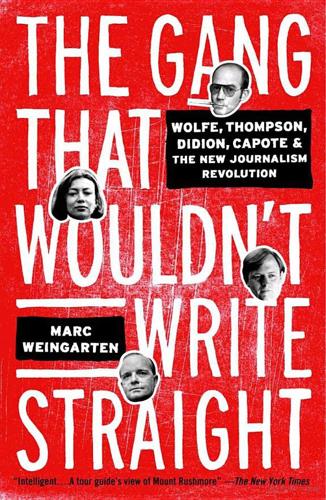
The Gang That Wouldn't Write Straight: Wolfe, Thompson, Didion, Capote, and the New Journalism Revolution
by
Marc Weingarten
Published 12 Dec 2006
A few enterprising activists would bring the debate to the foreground in short order, however. Weaned on the civil rights battles of the early sixties, they were now transferring their energies to domestic resistance against the war, using their flair for street theater and human mobilization in ways that the first-wave protesters could not fathom. Jerry Rubin, a former journalist and aspiring socialist who had participated in the earliest Free Speech Movement marches that had coalesced around the University of California campus in Berkeley, was the shrewdest agent provocateur of the antiwar effort. A founding member of the Youth International Movement along with Brandeis University grad and civil rights veteran Abbie Hoffman, Rubin in early 1965 was organizing two days of demonstrations to take place on the Berkeley campus, a call to action that would land Cal at the forefront of student-driven social activism in America.
…
There was a party in New York on Saturday night that he really wanted to attend, so it was best to get arrested early so that he could be released in time to catch a plane back to the city. Despite Mailer’s hand-wringing, it seemed that the latent New York establishment gallivanter in him would prevail. The march, as David Dellinger and Jerry Rubin had envisioned it, would start with a mass rally at the Lincoln Memorial and then work its way across the Potomac via the Arlington Bridge to the Pentagon. A short rally would be held, with speeches from dignitaries such as Noam Chomsky and Benjamin Spock, followed by the blockade of the building and an “exorcism” of the Pentagon led by Abbie Hoffman.
…
A hastily handwritten appeal was immediately filed, and after much wrangling with the public prosecutor, Mailer was released on his own recognizance. The arrest had been a crucible for Mailer, a test of his own resolve to fight the power, but in the end, he was resigned to his role as belletrist rebel. Even Jerry Rubin had to admit that “there was a part of me that knew he would have lost his effectiveness if he’d become a Yippie. Norman was better being Norman Mailer.” Mailer didn’t go to Washington with a specific magazine assignment, but when he returned to New York it occurred to him that there was a story to be written, perhaps a major piece.
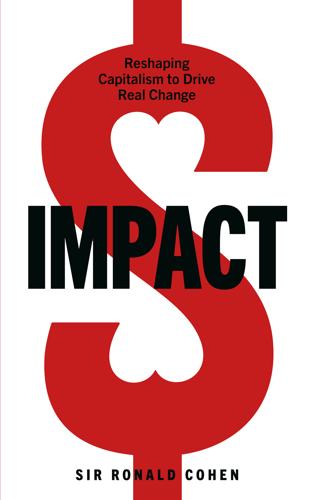
Impact: Reshaping Capitalism to Drive Real Change
by
Ronald Cohen
Published 1 Jul 2020
Through Pathways, 40 investors provided $12.43 million upfront, to enable the charitable service provider – Jewish Vocational Services (JVS) – to serve two thousand English language learners through four programs that combine language lessons and employment services.20 The goal of the project is to increase employment, secure higher-wage jobs and achieve a successful transition to higher education. Project outcomes are measured quarterly and dictate the payments received by investors. So far, eight success payments have been made.21 Jerry Rubin, the JVS CEO, explains what this means for the charitable service provider: ‘When you are literally paid for success, it drives program quality. If you’re measuring wage gains, which is possible, your program design will result in people getting better jobs and increased wages. Right now, adult education and workforce development are separate.
…
This model produces genuinely meaningful outcomes for both the clients and the Commonwealth, which is transformative.’22 Part of the reason JVS got involved in the pay-for-outcomes program model was because they wanted to expand their activity to the large numbers of adults that could benefit from their services, but as Jerry Rubin stated, ‘we have no financing mechanism’. Another reason was that this model allowed them to offer a service that was designed to achieve better outcomes – in this case, better economic opportunity – by providing a combination of English language instruction, employment services and career coaching.23 In other words, the combination of investor discipline and pay-for-outcomes equals expansion, innovation and impact.
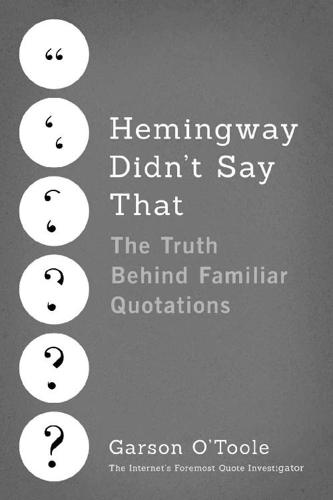
Hemingway Didn't Say That: The Truth Behind Familiar Quotations
by
Garson O'Toole
Published 1 Apr 2017
A week later, on January 12, 1973, the Times of London described a six-part graffito found on the library wall at the University of Guelph:11 To be is to do —Aristotle To do is to be —J. P. Sartre Do be do be do —F. Sinatra What is to be done? —Lenin Do It! —J. Rubin O.K.! O.K.! —T. Mann The line concerning “J. Rubin” was probably a reference to the political activist Jerry Rubin, who published a book titled Do It: Scenarios of the Revolution in 1970.12 QI has not attempted to provide rationales for each of the myriad lines inserted into this extended comical mélange over the years. In January 1982 the personals section of Reason magazine printed the following instance:13 TO DO IS TO BE —Kant To be is to do —Hegel Do be do be do —Sinatra Vonnegut’s aforementioned 1982 novel Deadeye Dick featured a fictional metropolis called Midland City and an imaginary airfield called the Will Fairchild Memorial Airport.
…
Accessed in The Times Digital Archive by Gale Cengage. 10. P. H. S., The Times Diary, Times (London, UK), January 5, 1973, 12. Accessed in The Times Digital Archive by Gale Cengage. 11. P. H. S., The Times Diary, Times (London, UK), January 12, 1973, 12. Accessed in The Times Digital Archive by Gale Cengage. 12. Jerry Rubin, Do It! Scenarios of the Revolution (Simon and Schuster, 1970). 13. Personals, Reason, January 1982, 58, http://unz.org/Pub/Reason-1982jan-00055. 14. Vonnegut, Deadeye Dick, 224. 15. “Do,” rec.humor Usenet newsgroup, March 21, 1990. Accessed in Google Groups, https://goo.gl/3RhS05. The earliest evidence of a version of this phrase known to QI appeared in an academic paper in the journal American Quarterly in 1976 by Laurel Thatcher Ulrich.

Finance and the Good Society
by
Robert J. Shiller
Published 1 Jan 2012
Today he would likely be posting his vacation photos on the Internet. Moreover, the Harvard education his family had purchased for him probably helped him conceive and execute the wonderful book about his vacation that has come down to us today. We can even add political revolutionaries to this list. Jerry Rubin was an antiestablishment political radical, author of Do It! Scenarios of the Revolution, who was sentenced to four years in prison for inciting protesters to riot at the 1968 Democratic National Convention in Chicago. Sometime after the sentence was overturned by an appeals court, he joined Wall Street to work as a market analyst for the brokerage rm John Muir & Co.
…
Karlan, Dean, and Margaret A. McConnell. 2009. “Hey Look at Me: The E ect of Giving Circles on Giving.” Unpublished paper, Yale University. Karlan, Dean, and Jonathan Zinman. 2011. “Microcredit in Theory and Practice: Using Randomized Credit Scoring for Impact Evaluation.” Science 332(6035):1278–84. Kasper, Rob. 1980. “Jerry Rubin Goes Wall Street, but Still Can’t Tie a Tie.” Baltimore Sun, August 19, B1. Kat, Harry, and Faye Menexe. 2003. “Persistence in Hedge Fund Performance: The True Value of a Track Record.” Journal of Alternative Investments 5(4):66–72. Kaufman, Henry. 2005. On Money and Markets: A Wall Street Memoir.

Doppelganger: A Trip Into the Mirror World
by
Naomi Klein
Published 11 Sep 2023
For Ehrenreich, this was all “part of a larger withdrawal into individual concerns after the briefly thrilling communal uplift some had experienced in the 1960s … If you could not change the world or even chart your own career, you could still control your own body—what goes into it and how muscular energy is expended.” It was in this context that Jerry Rubin, onetime yippie provocateur and Chicago Seven defendant, became, in the 1980s, a proud yuppie and fitness evangelist. Explaining her own longtime, often conflicted relationship with the gym, Ehrenreich wrote: “I may not be able to do much about grievous injustice in the world, at least not by myself or in very short order, but I can decide to increase the weight on the leg press machine by twenty pounds and achieve that within a few weeks.”
…
presidential elections: of 2000; of 2008; of 2016; of 2020 Price, Ned Prince Edward Island prison inmates privacy; see also surveillance Professor of Desire, The (Roth) Public Religion Research Institute Putin, Vladimir QAnon QR codes Queen’s University Querdenken Question of Zion, The (Rose) quoting Rabbinical Council of America racial doubling racism; civil rights movement and; Covid and; Great Replacement Theory and; police violence; reproductive health and; school curricula and; segregation; slavery; vaccine mandates compared to; see also immigrants, migrants; Indigenous people Radiohead Rank, Otto Reagan, Ronald Reconsidering Reparations (Táíwò) Red Vienna religion; Judaism; see also Christians reproductive health; abortion; childbirth; Covid vaccines and; pregnancy Republican Party Rescue, The (Conrad) Retasket, Norman right; diagonalism and, see diagonalism; far; far, and far-out Robin, Corey Roe v. Wade Rogan, Joe Rooney, Caroline Rose, Jacqueline Rosenblum, Nancy L. Rossetti, Dante Gabriel, How They Met Themselves Roth, Philip Roundup Roy, Arundhati Rubin, Jerry Rubin, Robert Rumble Russia; Jews; Revolution in; Revolution of 1905 in Russian Review, The Rutgers University Ruth, book of Rwanda Said, Edward Sakr, Omar Salisbury, Lord Sandberg, Sheryl Sanders, Bernie San Francisco Chronicle Saramago, José Sarkozy, Nicolas Sartre, Jean-Paul Satan Shoes Schmidt, Eric Schmitt, Rob schools; Covid and; curricula in Schwartz, Richard Scotland Screen New Deal Second Amendment Second Body, The (Hildyard) Second World War Secwépemc Nation Sedov, Sergei self; climate crisis and; multiplicity in; personal brands and self-citing “Self-Reliance” (Emerson) Senior, Jennifer September 11 attacks Serbia Sesame Street Live!
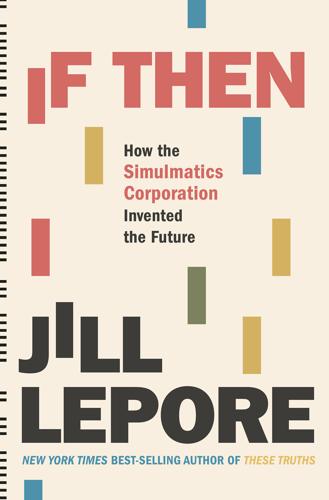
If Then: How Simulmatics Corporation Invented the Future
by
Jill Lepore
Published 14 Sep 2020
They carried rifles. They carried bayonets. They carried tear gas.91 The march had been planned in May, by the National Mobilization Committee to End the War in Vietnam, the coalition that had organized as a result of the march in New York in April. David Dellinger had asked twenty-nine-year-old Jerry Rubin to plan a march in Washington. Rubin, who’d dropped out of the University of California, Berkeley, in 1964, had organized the teach-in at Berkeley in May 1965, the meeting at which Eugene Burdick had been too unwell to speak. Rubin had also helped found the Youth International Party, or Yippies, with Abbie Hoffman.
…
He fortified the city with twelve thousand Chicago police officers, six thousand soldiers from the National Guard, six thousand army troops, and a thousand undercover intelligence agents. They arrested hundreds of demonstrators and beat and bullied more. The leaders, who’d also organized the march on the Pentagon in 1967, went to jail: David Dellinger and Jerry Rubin were two of the Chicago Seven, charged with conspiracy and crossing state lines to incite riot. The Yippies held their own nominating convention, in Lincoln Park, and nominated a pig, handing out flyers that said, “vote pig in 68.”31 The Republicans had a pachyderm; disenchanted Democrats answered with swine.
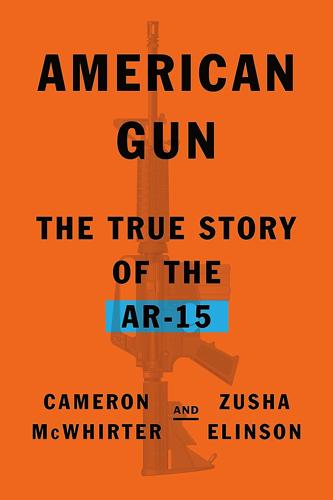
American Gun: The True Story of the AR-15
by
Cameron McWhirter
and
Zusha Elinson
Published 25 Sep 2023
Ichord, who served in the navy during World War II, also chaired the House Internal Security Committee, then investigating Yippies, Black Panthers, and other leftist organizations who opposed U.S. involvement in Vietnam. He gained national notoriety as a square foil at hearings attended by theatrical self-proclaimed revolutionaries such as Jerry Rubin and Abbie Hoffman. Ichord loathed such protesters who often used toy M16s as props in their protests and public stunts. Abbie Hoffman recounted in Yippie Manifesto (1969) that he came to a committee meeting with a “bandolero of real bullets and carrying a toy M16 rifle on my shoulder. The rifle was a model of the rifles the Viet Cong steal and then use to kill American soldiers in Vietnam.”
…
(May 15, 16, 31, June 21, July 25, 26, 27, August 8, 9, and 22, 1967), http://hdl.handle.net/2027/uiug.30112109164266, 4470. Democratic representative L. Mendel Rivers: Report on the Activities of the House Committee on Armed Services, 90th Cong., 1st and 2d Sess. (1967–1968), 11214–17. Abbie Hoffman recounted in Yippie Manifesto: See Jerry Rubin, “Yippie Manifesto, Free Pamphlet Series #1” (Vineyard Haven, MA: Evergreen Review, 1969), https://ia902909.us.archive.org/26/items/Rubin-1969-the-yippie-manifesto.pdf/rubin-1969-the-yippie-manifesto.pdf%27.pdf. Ichord was convinced that North Vietnam: See Ichord, Behind Every Bush. “I must say that before I went”: Richard H.

Generations: The Real Differences Between Gen Z, Millennials, Gen X, Boomers, and Silents—and What They Mean for America's Future
by
Jean M. Twenge
Published 25 Apr 2023
Kennedy (1925) Cesar Chavez (1927) Walter Mondale (1928) Martin Luther King Jr. (1929) Sandra Day O’Connor (1930) Ted Kennedy (1932) Diane Feinstein (1933) Ruth Bader Ginsburg (1933) Gloria Steinem (1934) Ralph Nader (1934) Geraldine Ferraro (1935) John McCain (1936) Antonin Scalia (1936) Madeleine Albright (1937) Colin Powell (1937) Nancy Pelosi (1940) Dick Cheney (1941) Jesse Jackson (1941) Bernie Sanders (1941) Joe Biden (1942) Mitch McConnell (1942) John Kerry (1943) Angela Davis (1944) Athletes and Sports Figures Arnold Palmer (1929) Mickey Mantle (1931) Roberto Clemente (1934) Wilt Chamberlain (1936) Jack Nicklaus (1940) Muhammad Ali (1942) Arthur Ashe (1943) Joe Namath (1943) Billie Jean King (1943) Journalists, Authors, and People in the News Harper Lee (1926) Hugh Hefner (1926) Erma Bombeck (1927) Maya Angelou (1928) Barbara Walters (1929) Neil Armstrong (1930) Tom Wolfe (1930) Toni Morrison (1931) Dan Rather (1931) Susan Sontag (1933) Philip Roth (1933) Joan Didion (1934) Charles Kuralt (1934) Carl Sagan (1934) Phil Donahue (1935) Ken Kesey (1935) Judy Blume (1938) Peter Jennings (1938) Joyce Carol Oates (1938) Jerry Rubin (1938) Jacqueline Kennedy Onassis (1939) Tom Brokaw (1940) Anthony Fauci (1940) Sue Grafton (1940) Ted Koppel (1940) Ed Bradley (1941) Nora Ephron (1941) Martha Stewart (1941) Michael Crichton (1942) Erica Jong (1942) John Irving (1942) Bob Woodward (1943) Carl Bernstein (1944) The Equality Revolution Trait: Pioneers in Civil Rights Imagine hopping into a time machine and stopping at two different times, just seven years apart: 1963 and 1970.
…
The 1964 genesis of the Berkeley Free Speech Movement, where students at the University of California demonstrated for the right to fund-raise on campus on behalf of the civil rights movement, was led by Mario Savio (b. 1942). Other prominent figures of the ’60s counterculture were also Silents, like antiwar activists Abbie Hoffman (b. 1936) and Jerry Rubin (b. 1938), “acid test” promoter Ken Kesey (b. 1935), and feminist Gloria Steinem (b. 1934). Muhammad Ali (b. 1942), who gained fame not just for his boxing but for his opposition to the Vietnam War, was a Silent. The musicians most associated with hippie culture were mostly Silents, like Jimi Hendrix (b. 1942) and Janis Joplin (b. 1943).
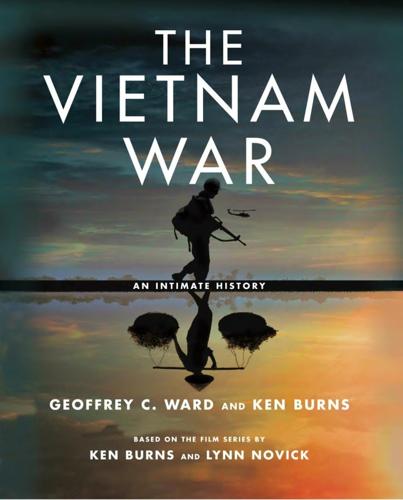
The Vietnam War: An Intimate History
by
Geoffrey C. Ward
and
Ken Burns
Published 4 Sep 2017
“There was a major demonstration either in New York or in Washington every fall and every spring,” remembered Bill Zimmerman, by then an assistant professor of psychology at Brooklyn College, and when yet another giant rally in Washington was planned for October 21, he and many others wanted to do something “more militant than simply stand around and make speeches opposing the war, which is what these demonstrations had become.” One of the organizers, the longtime antiwar activist David Dellinger, put it best. The time was long overdue, he said, for a shift “from protest to resistance.” Since the Pentagon represented “the murder of people throughout the world,” the Yippie leader Jerry Rubin said, “the only thing to do with [it] is shut it down.” The October 21 march was also meant to be the culmination of a national “End the Draft” week that had seen a protestor burn herself alive on the steps of the Federal Courthouse in Los Angeles; the public burning of draft cards in Boston; students tear-gassed, beaten, and arrested while trying to close down induction centers in Oakland, Chicago, Madison, and Brooklyn; and antiwar protests from Tokyo to Tel Aviv to London, where three thousand antiwar demonstrators stormed the U.S. embassy.
…
Peter, Paul, and Mary sang a new song by Phil Ochs, “I Declare the War Is Over.” Dr. Spock assured the crowd that America’s enemy was not North Vietnam. It was “Lyndon Johnson,” he said, “whom we elected as a peace candidate in 1964, who betrayed us within three months, [and] has stubbornly led us deeper and deeper into a bloody quagmire.” David Dellinger and Jerry Rubin helped lead roughly half the demonstrators across the Arlington Memorial Bridge toward the north parking lot of the Pentagon. “We marched unimpeded toward what we saw as the enemy,” Bill Zimmerman remembered. “To us, the Pentagon was the brain of an evil monster, and we burned with the need to confront it.
…
The second Moratorium Against the War, November 15, 1969, drew the largest crowd ever seen in Washington up to that time. This time there was trouble on the periphery. Helmeted militants tried to get into the South Vietnamese embassy and, when tear gas drove them back, ran up and down Connecticut Avenue smashing windows. As the speeches ended, Jerry Rubin and Abbie Hoffman began leading several thousand people toward the Justice Department. Jeremy Larner, a speechwriter for Senator McCarthy in 1968, now returned to freelance writing, caught up with Hoffman as they marched. “What do you think of all this, Abbie?” “This is more moral,” he says, surveying the sea of heads and hair, “but Woodstock had more dope.”
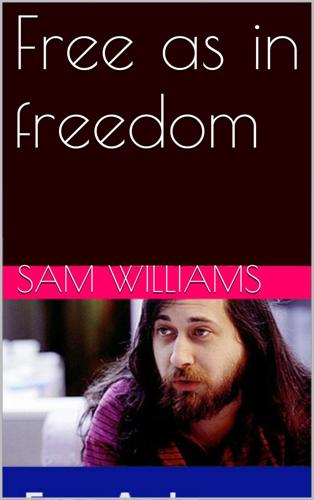
Free as in Freedom
by
Sam Williams
Published 16 Nov 2015
We would never have skipped it for a demonstration." Ultimately, Stallman says, the irrational forces driving the anti-war movement became indistinguishable from the irrational forces driving the rest of youth culture. Instead of worshiping the Beatles, girls in Stallman's age group were suddenly worshiping firebrands like Abbie Hoffman and Jerry Rubin. To a kid already struggling to comprehend his teenage peers, escapist slogans like "make love not war" had a taunting quality. Not only was it a reminder that Stallman, the short-haired outsider who hated rock 'n' roll, detested drugs, and didn't participate in campus demonstrations, wasn't getting it politically; he wasn't "getting it" sexually either.
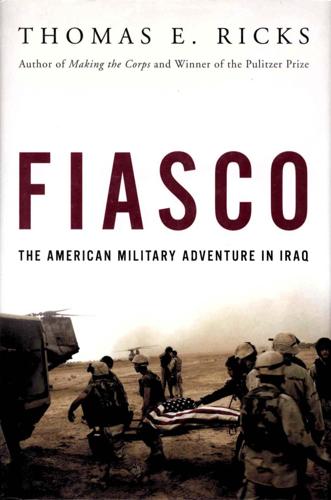
Fiasco: The American Military Adventure in Iraq
by
Thomas E. Ricks
Published 30 Jul 2007
That heavy, Latinate, noble-sounding sentence captures the essence of Scowcroft's problem, because it reflects his misreading of the thinking of the Bush administration after 9/11. Wolfowitz and Cheney had split with the wisdom of the first Bush administration that stability was the lodestar of American foreign policy. The first Bush had been shaped by World War II. The second Bush was a product of the 1960s, at times more in sync with the attitudes of sixties radical Jerry Rubin than with those of Winston Churchill. Efforts by the so-called realists such as Scowcroft and James Baker to produce stability had led to decrepit regimes, sallow economies, and growing terrorism, the new president's men said. 48 FIASCO If you liked 9/11, they said quietly, just keep it up.
…
They saw it as synonymous with stagnation. They wanted radical change in the Mideast. They were determined to drain the swamp—that is, to alter the political climate of the region so that it would no longer be so hospitable to the terrorists inhabiting it. A less charitable way of putting it was that they were willing, a bit like Jerry Rubin, to take a chance and then groove on the ensuing rubble. In the following days, Republican mandarins Henry Kissinger and James Baker issued their own warnings to President Bush. A spate of cautionary articles echoing Scowcroft's concerns also appeared in the following weeks in publications aimed at military professionals.
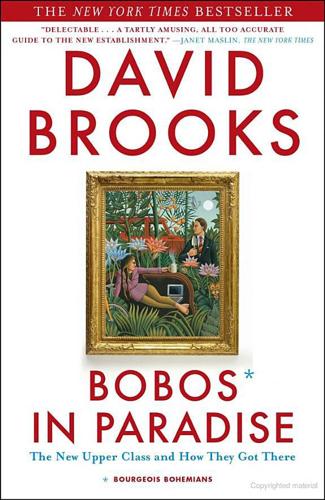
Bobos in Paradise: The New Upper Class and How They Got There
by
David Brooks
Published 1 Jan 2000
All that is required is that people of good faith seek their own paths in an open and tolerant manner, without trying to impose their own paths on others. Spiritual Freedom Given the opportunity to explore their new-found spiritual freedom, the members of the educated class didn’t need to be asked twice. Some of them hightailed away from the rituals and ceremonies of institutionalized religion and set off on individual spiritual quests. Jerry Rubin, whose life became a caricature of the zeitgeist shifts of his age, recalled in his memoir, Growing (Up) at Thirty-Seven, “In five years, from 1971 to 1975, I directly experienced est, gestalt therapy, bioenergetics, rolfing, massage, jogging, health foods, tai chi, Esalen, hypnotism, modern dance, meditation, Silva Mind Control, Arica, acupuncture, sex therapy, Reichian therapy and More House—a smorgasbord course in New Consciousness.”
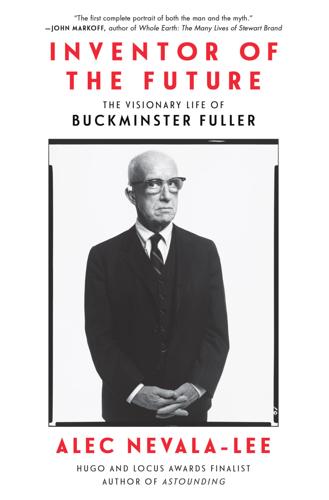
Inventor of the Future: The Visionary Life of Buckminster Fuller
by
Alec Nevala-Lee
Published 1 Aug 2022
This might not have been entirely true—Fuller’s own granddaughter suspected that he was “exaggerating”—but the two men soon reconciled. They saw each other again at a conference for the United States Student Press Association in Washington, DC, which was taken over by what Peter Rabbit, a resident of Drop City, called “an incredible list of freaks,” including the radicals Abbie Hoffman and Jerry Rubin, the cofounders of the Yippies. After a wild weekend of debates over the Vietnam War, Fuller was given the last speaking slot. Peter Rabbit was amazed by his ability to hold the crowd for two hours: “He brought it all together—stood up there, reared back, closed his eyes, touched his body with his hands, and laid it out beautifully.”
…
Douglas Engelbart: Markoff, What the Dormouse Said, 210–11. Carl Sagan and . . . Arnold Schwarzenegger: Classified ad in a 1977 issue of Saturday Review, https://books.google.com/books?id=SPseAQAAMAAJ (accessed December 2020). RBF, Schwarzenegger, and Werner Erhard were listed as speakers at an event organized by Jerry Rubin (John Leonard, “Private Lives,” New York Times, November 8, 1978, sec. C, 12). lectures on campuses: Susan Heller Anderson, “Stars of Today’s Lecture Circuit,” New York Times, April 8, 1982, sec. C, 1. The firm was Brian Winthrop International. North Perry, Ohio: RBF, Artifacts of R. Buckminster Fuller, vol. 4, 326–35.

The Impulse Society: America in the Age of Instant Gratification
by
Paul Roberts
Published 1 Sep 2014
Consider our political culture, which more and more encourages a rapid, visceral response to policy or events. Consider the relentless ideology of personal liberation that, in conjunction with the consumer marketplace, continues to reject anything hindering our all-important, all-justifying self-knowledge and self-discovery. (As Yippie activist Jerry Rubin boasted in 1970, “Whenever we see a rule we must break it. Only by breaking rules do we discover who we are.”15) Or consider the growing research showing that myopia and short-termism actually increase when we’re uncertain about the future—something our new economic model seems to have made more likely.

The Age of Stagnation: Why Perpetual Growth Is Unattainable and the Global Economy Is in Peril
by
Satyajit Das
Published 9 Feb 2016
The focus was, in reality, less political than personal, centered on the sexual (assisted by the availability of the contraceptive pill), the spiritual, new styles of dress and appearance. It found its clearest expression in drugs and music, culminating in Woodstock in August 1969. The festival marked an end, not a beginning, as many of its stars would die shortly and the counterculture movement fade away. In August 1967, Abbie Hoffman and Jerry Rubin led a group of fellow Yippies onto the visitors’ balcony of the New York Stock Exchange to denounce greed and the Vietnam War. In a piece of political theater, they threw dollar bills onto the trading floor below. In the 1980s, Rubin re-emerged as a businessman, arguing that the market system was a means of achieving meaningful change in the world, and actor Jane Fonda, who once campaigned for radical causes, starred in bestselling fitness videos.

Noam Chomsky: A Life of Dissent
by
Robert F. Barsky
Published 2 Feb 1997
During the week leading up to the demonstration, Chomsky and others had put forth a "call to resist illegitimate authority," which was published in the 12 October 1967 edition of the New York Review of Books, and which was signed by thousands of people interested file:///D|/export3/www.netlibrary.com/nlreader/nlreader.dll@bookid=9296&filename=page_127.html [4/16/2007 3:20:44 PM] Document Page 128 in participating. The stage was thus set for the 20 October March on the Pentagon, led by the likes of David Dellinger and Jerry Rubin, "serious men, devoted to hard detailed work" (Mailer 53). The leaflet promoting the march reads: WE ARE PLANNING AN ACT OF DIRECT CREATIVE RESISTANCE TO THE WAR AND THE DRAFT IN WASHINGTON ON FRIDAY, OCTOBER 20. The locale of our action will be the Department of Justice. We will gather at the First United Congregational Church of Christ, 10th and G Streets, N.W., Washington ... at 1 P.M.

Late Bloomers: The Power of Patience in a World Obsessed With Early Achievement
by
Rich Karlgaard
Published 15 Apr 2019
Meg, a twenty-five-year-old graduate from a good college, who lives independently and holds a promising job in a large midwestern city, spoke for many of her peers when she told me, “I feel this awful pressure, all the time, to do more than I am doing.” Some of this is not new. The United States and other affluent countries have always fetishized youth in terms of physical appearance and cultural hipness. During the 1960s cultural revolution, the hippie spokesman Jerry Rubin exhorted youth to never trust anyone over thirty. But Rubin’s comment was largely a protest against the Vietnam War and the older (and presumably untrustworthy) men who were drafting teenagers into the conflict. Over the last few decades, our cultural obsession with youth has focused less on war and idealism than on external measures of success.
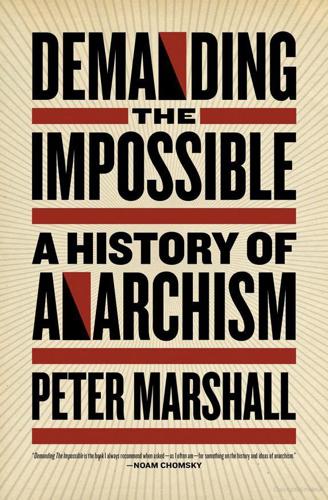
Demanding the Impossible: A History of Anarchism
by
Peter Marshall
Published 2 Jan 1992
A massive non-conformist youth culture developed across the land, especially in California, New York and New England, although its libertarian rhetoric was often a disguise for a self-indulgence which never really threatened the Establishment. It petered out into street-fighting amongst the Yippies inspired by Abbie Hoffman and Jerry Rubin, and the spluttering pyrotechnics of the Weathermen. The seventies and eighties in the United States saw a resurgence of right-libertarianism, with ‘anarcho-capitalists’ like Murray Rothbard drawing inspiration from Spooner and Tucker. The Libertarian Party became in the eighties the third largest party in the country.
…
They celebrated tolerance and diversity and sought the free satisfaction of desire. The social nature of the movement found expression in slogans like ‘Make Love, not War’ – a principle with profound social and psychological implications since it recognized the link between sexual repression and organized violence. While not a conscious anarchist, Jerry Rubin was infected by the libertarian tendency of the counter-culture in America when he declared: [After the revolution] there will be no more jails, no courts, or police. The White House will become a crash pad for anybody without a place to stay in Washington. The world will be one big commune with free food and housing, everything shared.
…
Bimal Prasad (Bombay: Asia Publishing House, 1964), p, 161 35 Everyman’s Weekly (27 April 1975) 36 See Ostergaard, ‘Indian Anarchism: The Curious Case of Vinoba Bhave - Anarchist Saint of Government’ in For Anarchism, op. cit., pp. 201–15 37 See Ostergaard, Nonviolent Revolution in India (New Delhi: Gandhi Peace Foundation, 1985), p. 281 Chapter Thirty-Five 1 Carl Oglesby, ‘The Idea of the New Left’, The New Left Reader (New York: Grove Press, 1969), p. 15 2 See Nigel Young, An Infantile Disorder: The Crisis and Decline of the New Left (Routledge & Kegan Paul, 1977), pp. 132–3 3 Ibid., pp. 134, 142 4 The New Left Reader, op. cit., p. 142 5 Mitchell Goodman, ed., Introduction, The Movement towards a New America: The Beginnings of a Long Revolution (New York: Knopf, 1970), p. vii 6 See Young, An Infantile Disorder, op. cit., p. 136. Apter also adds unreason, spontaneous violence, and irresponsibility but these are not characteristically anarchist tendencies. Apter, ‘The Old Anarchism and the New’, Anarchism Today, op. cit., p. 1 7 Jerry Rubin, Do It! Quoted in De Leon, The American as Anarchist, op. cit., p. 85 8 Oglesby, quoted in Goodman, Introduction, The Movement towards a New America, op. cit. 9 Theodore Roszzk, Where the Wasteland Ends (Faber & Faber, 1973), pp. 424, 431–2 10 See Keith Melville, ‘The Anarchist Response’, Communes in the Counter-Culture (New York: Morrow, 1972), pp. 114–33; Judson Jerome, Families of Eden: Communes and the New Anarchism (New York: Seabury, 1974), pp. 231–51; and L.

100 Years of Identity Crisis: Culture War Over Socialisation
by
Frank Furedi
Published 6 Sep 2021
Changing yourself or realising yourself, expressing yourself or emancipating yourself became rallying calls for young people drawn towards the self-absorbed spirit of the time. For many, the project of changing yourself served as an end in itself. This was a time when former leaders of the 1960s cultural movement – Jerry Rubin, Abbie Hoffman – declared that it was ‘more important to get your head together than to move the multitudes’.696 The vociferous inward turn by the counter-culture served as the precursor to the politicisation of identity. The politicisation of the emotional needs of the self was one of the most distinct contributions of the 1960s.
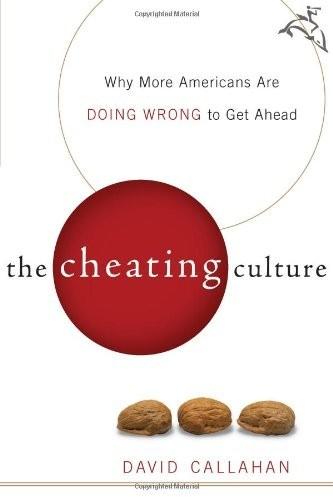
The Cheating Culture: Why More Americans Are Doing Wrong to Get Ahead
by
David Callahan
Published 1 Jan 2004
As David Brooks has recounted in Bobos in Paradise, the '60s ultimately paved the way for a permanent cease-fire in the long war between bohemian and bourgeois value systems.14 The "yuppie" phenomenon underscored how easily '60s individualism morphed into '80s materialism. The yuppie officially appeared in March 1983, discovered by Chicago Tribune columnist Bob Greene in an article about Jerry Rubin, the former yippie turned Wall Street networker. The following year, 1984, was dubbed "The Year of the Yuppie," in a Newsweek cover story. The yuppies helped define what personal expression meant in the '80s. Yuppies were obsessed with their material and professional advancement to the exclusion of other concerns.
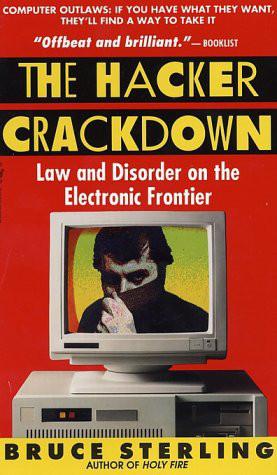
The Hacker Crackdown
by
Bruce Sterling
Published 15 Mar 1992
Their basic tenets were flagrant sexual promiscuity, open and copious drug use, the political overthrow of any powermonger over thirty years of age, and an immediate end to the war in Vietnam, by any means necessary, including the psychic levitation of the Pentagon. The two most visible Yippies were Abbie Hoffman and Jerry Rubin. Rubin eventually became a Wall Street broker. Hoffman, ardently sought by federal authorities, went into hiding for seven years, in Mexico, France, and the United States. While on the lam, Hoffman continued to write and publish, with help from sympathizers in the American anarcho-leftist underground.
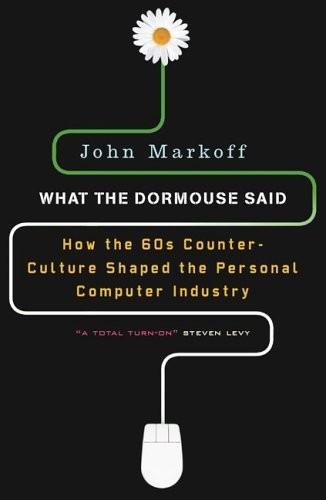
What the Dormouse Said: How the Sixties Counterculture Shaped the Personal Computer Industry
by
John Markoff
Published 1 Jan 2005
But after midnight, when the dispersal of the money was being debated, Moore got angry. This was just like all the bad things that money did everywhere else in the world, he decided. Early on he had gone up to the microphone, removed one of the dollar bills from his pocket, held it up in the air, and burned it. It was a little bit like the Yippies Jerry Rubin and Abbie Hoffman showering dollars onto the floor of the New York Stock Exchange. The point, he argued, was not about money, it was about people. He could see that the money that he so despised was being greeted as a savior and that people were being bought, which was typical. There were big arguments, and it was just the usual downer.
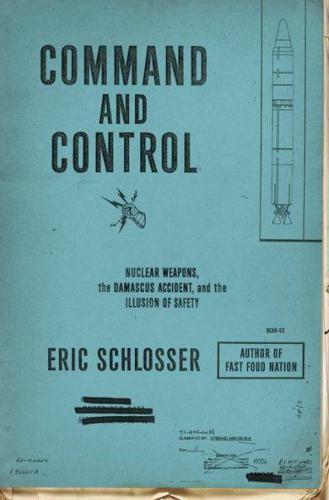
Command and Control: Nuclear Weapons, the Damascus Accident, and the Illusion ofSafety
by
Eric Schlosser
Published 16 Sep 2013
The year 1980, the start of a new decade, was when that change became palpable, in ways both trivial and telling. During the first week of September, the antiwar activist and radical Abbie Hoffman surrendered to federal authorities after more than six years on the run. Before turning himself in, Hoffman sat for a prime-time television interview with Barbara Walters. Another radical leader, Jerry Rubin, had recently chosen a different path. In 1967, Hoffman and Rubin had tossed dollar bills over the balcony at the New York Stock Exchange as a protest against the evils of capitalism. In 1980, Rubin took a job as an investment analyst on Wall Street. “Politics and rebellion distinguished the ’60’s,” he explained in the New York Times.
…
William Gibson, “Redeeming Vietnam: Techno-Thriller Novels of the 1980s,” Cultural Critique, no. 19 (Fall 1991), pp. 179–202. “Life begins at forty”: Quoted in David Sheff, All We Are Saying: The Last Major Interview with John Lennon and Yoko Ono, ed. G. Barry Golson (New York: St. Martin’s Griffin, 2000), p. 8. “Politics and rebellion distinguished the ‘60’s”: Jerry Rubin, “Guess Who’s Coming to Wall Street,” New York Times, July 30, 1980. the highest-paid banker … earned about $710,000 a year: Roger E. Anderson earned $710,440 in 1980, an income that would be roughly $2 million in today’s dollars. A few years later, Anderson was forced to leave Continental Illinois, and the Federal Deposit Insurance Corporation subsequently took it over—at the time, the largest bank bailout in American history.
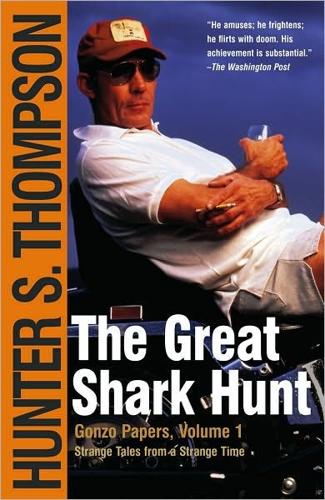
The Great Shark Hunt: Strange Tales From a Strange Time
by
Hunter S. Thompson
Published 6 Nov 2003
This is why the Sports Desk insists that these waterheads must be kept out of the building at all costs. We have serious business to deal with, and these fuckers will only be in the way. Sincerely, Raoul Duke Rolling Stone, #90, September 2, 1971 Memoirs of a Wretched Weekend in Washington One of my clearest memories of that wretched weekend is the sight of Jerry Rubin standing forlornly on the steps of a marble building near the Capitol, watching a gang fight at the base of a flagpole. The "counter-inaugural" parade had just ended and some of the marchers had decided to finish the show by raping the American flag. Other marchers protested, and soon the two factions were slugging it out.
…
And so are the rest of us, for we are all in that eye -- even the young militants of the New Left, who are now more disorganized than even the liberal Democrats, who at least have a figurehead. The Washington protest was a bust, despite the claims of the organizers. . . and for reasons beyond mud and rain. Jerry Rubin was right: it was probably "the last demonstration" -- or at least the last one in that older, gentler and once-hopeful context. On Monday night, around dusk, I went back to the big circus tent that had been the scene, just 20 hours earlier, of MOBE's Counter-Inaugural Ball. On Sunday night the tent had been a mob scene, with thousands of laughing young dissidents smoking grass and bouncing balloons around in the flashing glare of strobe-lights and rock-music.
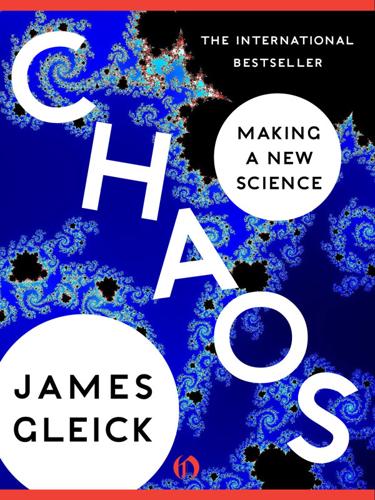
Chaos: Making a New Science
by
James Gleick
Published 18 Oct 2011
He parlayed his understanding of history and his intuition about nature into an ability to announce, quietly, that a whole untried area of research was now worth a mathematician’s time. Like a successful businessman, he evaluated risks and coolly planned his strategy, and he had a Pied Piper quality. Where Smale led, many followed. His reputation was not confined to mathematics, though. Early in the Vietnam war, he and Jerry Rubin organized “International Days of Protest” and sponsored efforts to stop the trains carrying troops through California. In 1966, while the House Un-American Activities Committee was trying to subpoena him, he was heading for Moscow to attend the International Congress of Mathematicians. There he received the Fields Medal, the highest honor of his profession.
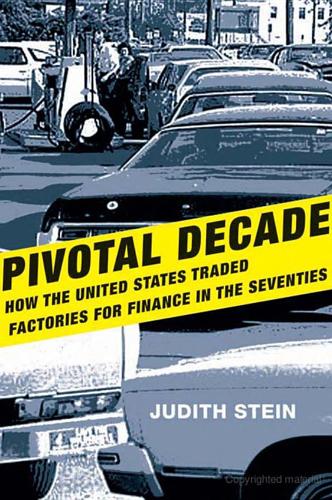
Pivotal Decade: How the United States Traded Factories for Finance in the Seventies
by
Judith Stein
Published 30 Apr 2010
That no one suggested Muskie demonstrated the provincialism and fatigue surrounding the deliberation.37 When Eagleton, who was not well known, was finally chosen, the matter did not end. That evening, the charade of openness required six other nominations, representing factions of the McGovern coalition. Not even for their own candidate would they discipline their desire. Once control was broken, delegates nominated Jerry Rubin, Ralph Nader, Archie Bunker, Mao Tse-tung, and many others. Ironically, it was the Wallace delegation from Alabama, not the McGovern group from New York, which shifted its votes to make Eagleton the vice presidential candidate. The price for this lengthy indulgence was that McGovern began his acceptance speech at 2:48 a.m.38 Not a good beginning.

Whole Earth: The Many Lives of Stewart Brand
by
John Markoff
Published 22 Mar 2022
He took the train across the country, on the way reading Paul Ehrlich’s The Population Bomb. After appearing on the panel, he showed WAR:GOD as the warm-up act for a rock concert featuring the MC5, then at the height of their “Kick out the jams, motherfuckers!” fame. Another panel featured Ralph Metzner, an LSD pioneer, and antiwar yippies Jerry Rubin, Abbie Hoffman, and Paul Krassner. Brand had met Hoffman through John Brockman, and he continued to be attracted to the “psychedelic” side of the Vietnam War protest movement. That was certainly an accurate description of Hoffman, who would become embroiled in the trial of the Chicago 8 that fall, and who took pleasure in being absolutely outrageous.
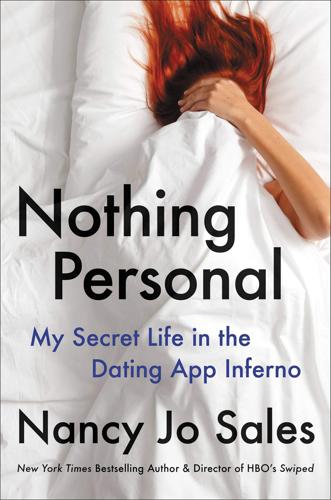
Nothing Personal: My Secret Life in the Dating App Inferno
by
Nancy Jo Sales
Published 17 May 2021
All that creative energy she had, which had never been remotely tapped, was now flowing into the restaurant’s vegetarian lasagna and shrimp tempura and the creamy miso dressing on cornucopia-like salads. After she came on the scene, the place transformed into an unlikely Miami hot spot, attracting some counterculture celebrities such as Abbie Hoffman and Jerry Rubin, whenever they were in town. And then there were our homegrown stars, like the impossibly cool cats of KC and the Sunshine Band and the lionlike Bee Gee brothers, who moved to Miami in the mid-seventies. “Your parents owned that hippie restaurant?” a former editor of Sports Illustrated asked me in the nineties, when I was a newbie reporter at People and working in the Time, Inc., building.
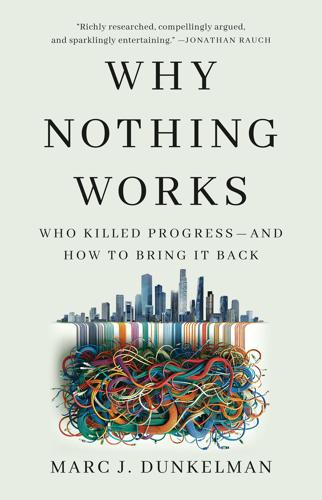
Why Nothing Works: Who Killed Progress--And How to Bring It Back
by
Marc J Dunkelman
Published 17 Feb 2025
Outside were the Jeffersonians who rejected the very premise of “liberal” politics.94 The two groups weren’t at odds over questions of policy so much as they were fundamentally offended by the other’s worldview. When Mayor Richard Daley, a Hamiltonian beacon as indelible as Robert Moses, licensed Chicago’s cops to use what Democratic senator Abraham Ribicoff termed “Gestapo tactics” on the protestors outside, the tension came to a head.95 As Jerry Rubin, the countercultural icon helping to organize the demonstrations, explained: “We wanted exactly what happened.… We wanted to create a situation in which the Chicago police and the Daley administration and the federal government and the United States would self-destruct.… The message of the week was of an America ruled by force.

When You and Your Mother Can't Be Friends: Resolving the Most Complicated Relationship of Your Life
by
Victoria Secunda
Published 30 Mar 1990
The Baby Boom generation, the seventy-six million men and women born between 1946 and 1964, changed the face of America, monopolizing media attention and advertising dollars, which were x.2iXgQtQd just for the kids. It was the first generation of children to be coddled and wooed for its profitability—they were an economic gold mine. For the first time the senior generation was upstaged—and outnumbered—by its progeny, instead of the other way around. "We ain't never, never gonna grow up!'' shouted Yippie Jerry Rubin. "We're gonna be adolescents/^r<?i;^r!" Changes for women in this generation were staggering. No longer were women going to be defined solely by spouses and children. No longer would they unblinkingly accept pay unequal to their male peers'. There is virtually no field that growing numbers of women have not invaded, working as lawyers, builders, pilots, clergy, police, and even army generals—the whole range of careers that were once male-only bastions.

The Sullivanians: Sex, Psychotherapy, and the Wild Life of an American Commune
by
Alexander Stille
Published 19 Jun 2023
Her free-flowing laughter, and the relaxed roundness of the body that went with it, told me she indulged and enjoyed herself. Carol sang in several bands with other Sullivanians. One of them was invited to play at a protest event in Miami at the 1972 Republican National Convention that would renominate President Richard Nixon. Stars of the counterculture Abbie Hoffman and Jerry Rubin—the leaders of the Yippies and defendants in the infamous “Chicago Seven” trial—were there, as was the poet Allen Ginsberg. Carol, though, remembered little of it, as she experienced it in a drunken haze. Her drinking was starting to become a real problem. Sometimes during her sessions with Jane Pearce, when they had run out of things to talk about, they would drink together.
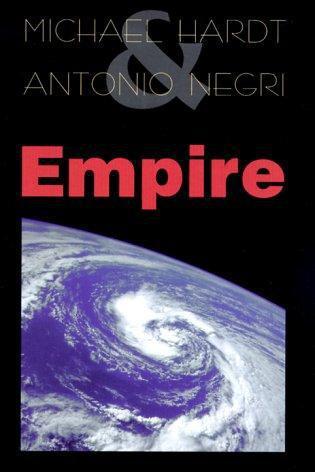
Empire
by
Michael Hardt
and
Antonio Negri
Published 9 Mar 2000
This increased socialization, along with the reduction of social space and temporality, is a process that no doubt benefits capital with increased productivity, but is one also that points beyond the era of capital toward a new social mode of production. 3.3 R E S I S T A N C E , C R I S I S , T R A N S F O R M A T I O N The continuity ofstruggle is easy: the workers need only them- selves and the boss in front of them. But the continuity of organiza- tion is a rare and complex thing: as soon as it is institutionalized it quickly becomes used by capitalism, or by the workers’ movement in the service ofcapitalism. Mario Tronti The New Left sprang . . . from Elvis’s gyrating pelvis. Jerry Rubin Earlier we posed the Vietnam War as a deviation from the U.S. constitutional project and its tendency toward Empire. The war was also, however, an expression of the desire for freedom ofthe Vietnamese, an expression ofpeasant and proletarian subjec- tivity—a fundamental example of resistance against both the final forms of imperialism and the international disciplinary regime.
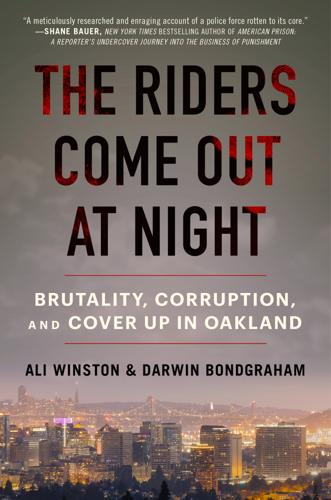
The Riders Come Out at Night: Brutality, Corruption, and Cover-Up in Oakland
by
Ali Winston
and
Darwin Bondgraham
Published 10 Jan 2023
Oakland, with its downtown Army Induction Center, where tens of thousands of young men were processed for eventual combat, became a battleground between radicals and Washington, DC. The Vietnam Day Committee (VDC), an antiwar coalition formed in 1965 by several young radicals including Yippie and future Chicago Eight member Jerry Rubin, had blockaded troop transport trains in Berkeley and the nearby city of Albany, and picketed military commanders visiting San Francisco. They identified Oakland’s induction center as a strategic location where nonviolent civil disobedience could slow down the intensifying war. For months, small groups of activists gathered outside the center on Clay Street, just behind Oakland City Hall, handing out pamphlets to inductees or symbolically trying to block its doors.
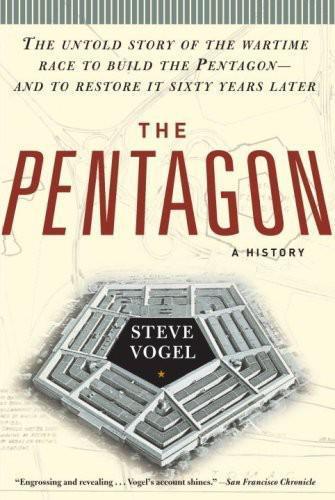
The Pentagon: A History
by
Steve Vogel
Published 26 May 2008
Army intelligence concluded after the march that there had been “probably fewer than 500 violent demonstrators; however these violent types were backed by from 2,000 to 2,500 ardent sympathizers.” The actions of this hardcore minority would dominate the day and form the lasting impressions of the march. Marching at the front, arms linked, were prominent antiwar demonstrators including Dave Dellinger, Jerry Rubin, Norman Mailer, the poet Robert Lowell, and Benjamin Spock, the beloved pediatrician and author of books on raising babies (an Army report noted with suspicion that he advocated “permissive child rearing”). Great cheers greeted a contingent of veterans of the Lincoln Brigade, who had fought the fascists in Spain and now marched carrying a sign reading “No More Guernicas.”
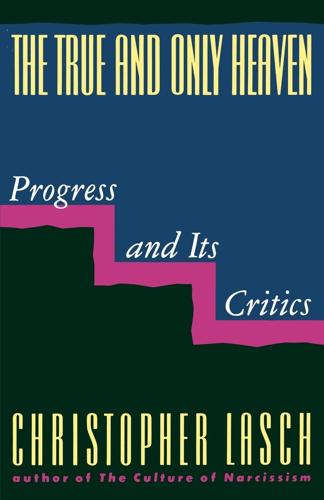
The True and Only Heaven: Progress and Its Critics
by
Christopher Lasch
Published 16 Sep 1991
It soon became clear, however, that the student movement took a different view of the university, one that indiscriminately condemned all institutions and equated "liberation" with anarchic personal freedom. As the new left degenerated into revolutionary histrionics, its spokesmen—clownish media freaks like Jerry Rubin and Abbie Hoffman, seekers of "existential" authenticity like Tom Hayden, connoisseurs of confrontation like Mark Rudd—obviously found it more and more difficult to distinguish between power and authority. My own reading and experience had convinced me that American society suffered from the collapse of legitimate authority and that those who ran our institutions, to the degree to which they had lost public confidence, had to rely on bribery, manipulation, intimidation, and secret -27- surveillance.
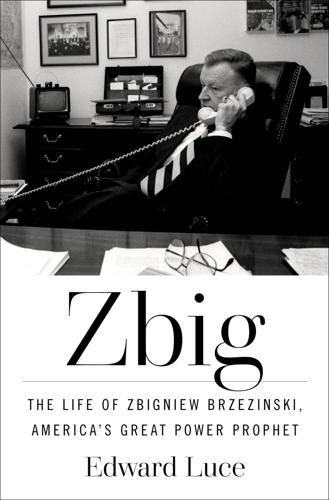
Zbig: The Life of Zbigniew Brzezinski, America's Great Power Prophet
by
Edward Luce
Published 13 May 2025
Humphrey accepted the tarnished crown on August 28 at the International Amphitheatre in downtown Chicago. Throughout the four days of the convention, the hall was under constant siege. Signs proclaiming DUMP THE HUMP and HITLER, HUBERT AND HIROHITO could be seen though tear gas. Thousands of protestors, among them Allen Ginsberg, William S. Burroughs, Jean Genet, and Jerry Rubin, occupied nearby Grant Park; they were assaulted in uneven clashes with Mayor Richard Daley’s Chicago police. Vietnam was not their sole cause. Among other demands, they called for full unemployment—“Let the machines do it”—and the abolition of money. The media were far more riveted by the events outside the hall than those within.

The Rough Guide to New York City
by
Rough Guides
Published 21 May 2018
At 208 E 13th St historical markers commemorate Emma Goldman, who lived here from 1903 to 1913 while publishing her anarchist paper Mother Earth (she was deported to the Soviet Union in 1919). In the 1950s, the East Village became one of the main New York haunts of the Beat poets such as Kerouac, Burroughs and Ginsberg – the last wrote Kaddish at 170 E 2nd St in 1961, as tribute to his mother, Naomi. The Yippies antiwar group was founded by Abbie Hoffman and Jerry Rubin here in 1967, and was based at 9 Bleecker St until being evicted – finally – in 2014. Andy Warhol debuted the Velvet Underground at the Fillmore East (105 Second Ave at E 6th St), which played host to just about every band you’ve ever heard of between 1968 and 1971, before becoming The Saint (also now defunct), a gay disco famous for its three-day parties (1980–90).
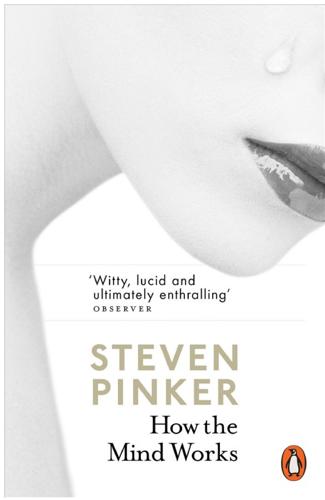
How the Mind Works
by
Steven Pinker
Published 1 Jan 1997
The tortoise was saying, “Have you got that last step written down? Unless I’ve lost count, that makes a thousand and one. There are several millions more to come.” The solution to the paradox, of course, is that no inference system follows explicit rules all the way down. At some point the system must, as Jerry Rubin (and later the Nike Corporation) said, just do it. That is, the rule must simply be executed by the reflexive, brute-force operation of the system, no more questions asked. At that point the system, if implemented as a machine, would not be following rules but obeying the laws of physics. Similarly, if representations are read and written by demons (rules for replacing symbols with symbols), and the demons have smaller (and stupider) demons inside them, eventually you have to call Ghost-busters and replace the smallest and stupidest demons with machines— in the case of people and animals, machines built from neurons: neural networks.

Palo Alto: A History of California, Capitalism, and the World
by
Malcolm Harris
Published 14 Feb 2023
xix Richard Oakes, a Mohawk SF State student on an OEO grant, was the first to step on the island, where he read the “Alcatraz Proclamation.” Damon B. Akins and William J. Bauer, We Are the Land: A History of Native California (University of California Press, 2021), 281–82. xx The exception to this trend was perhaps the Yippies, the group led by Abbie Hoffman and Jerry Rubin. They worked in a tradition of Jewish humor that wasn’t afraid of alienating the goys. Which it did. A lot. xxi The idea of the revolutionary technician leached into the mainstream in unpredictable ways. Stephanie Rothman’s low-budget soft-core erotica The Student Nurses (1970) depicts a nursing student who falls for a Chicano militant and turns down a hospital job in order to bring medicine to the people.

Strategy: A History
by
Lawrence Freedman
Published 31 Oct 2013
It was a political critique which traded “argument for incantation.”43 The theme was picked up by the folk singer Phil Ochs and led to a November 1967 demonstration in New York with three thousand young people running through the streets, proclaiming loudly “I declare the war is over.” Out of this came the idea for the “Yippies” as the political wing of the hippies. The founders of the Yippies were Abbie Hoffman and Jerry Rubin. Both had been involved in radical protests since the start of the decade. Rubin had been involved in the Berkeley free speech movement and had become a fulltime activist, organizing “teach-ins” against the war. He had a reputation as an imaginative tactician but had also moved well to the left.
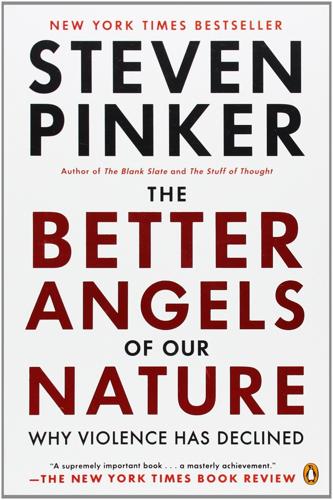
The Better Angels of Our Nature: Why Violence Has Declined
by
Steven Pinker
Published 24 Sep 2012
But the next step in Elias’s sequence—the psychological change toward greater self-control and interdependence—came under steady assault in the counterculture of the generation that came of age in the 1960s. A prime target was the inner governor of civilized behavior, self-control. Spontaneity, self-expression, and a defiance of inhibitions became cardinal virtues. “If it feels good, do it,” commanded a popular lapel button. Do It was the title of a book by the political agitator Jerry Rubin. “Do It ’Til You’re Satisfied (Whatever It Is)” was the refrain of a popular song by BT Express. The body was elevated over the mind: Keith Richards boasted, “Rock and roll is music from the neck downwards.” And adolescence was elevated over adulthood: “Don’t trust anyone over thirty,” advised the agitator Abbie Hoffman; “Hope I die before I get old,” sang The Who in “My Generation.”
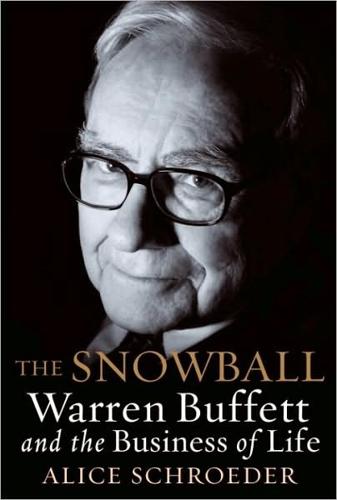
The Snowball: Warren Buffett and the Business of Life
by
Alice Schroeder
Published 1 Sep 2008
Buffett lost money in stocks at times and was quick to cut his losses. The margin of safety didn’t prevent losses but shifted the odds away from large losses. 12. The Youth International Party (Yippees), a prankster group of anarchist activists, nominated Pigasus the Pig as their party candidate. Leader Jerry Rubin said, “Why vote for half-pigs like Nixon, Wallace, and Humphrey, when you can have the whole hog?” at a speech to the University of British Columbia Faculty Club (October 24, 1968). 13. Interview with Verne McKenzie, who says that Chace was upset but did not show it. He did what he had to do. 14.